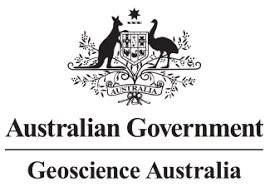
Type of resources
Topics
Keywords
Contact for the resource
Provided by
Years
-
Survey FK200308 on the R/V Falkor undertook detailed mapping within two significant and biologically unexplored submarine canyons (Cape Range and Cloates Canyon) in the Gascoyne Marine Park. The Gascoyne Marine Park covers 81, 766 km2 adjacent to the Ningaloo Marine Park. The canyons form part of the habitat protection and multiple use zones of the marine park and are identified as Key Ecological Features. The canyons provide an important connection between the abyssal plain environments and the Commonwealth waters adjacent to Ningaloo Reef on the continental shelf. High productivity aided by upwelling through the canyons has been related to aggregations of whale sharks, manta rays, humpback whales, sea snakes, sharks, large predatory fish and seabirds. In addition, the hard canyon walls provide habitat for a range of sessile invertebrates, while the soft sediments on the canyon floor support a range of mobile invertebrates. The data from this survey will provide a comprehensive taxonomic survey to characterise the marine biodiversity of the canyons or to understand the distribution of canyon habitats in relation to the seabed morphology. Bathymetry and acoustic reflectance (backscatter) data were acquired in the survey region using a Kongsberg 30 kHz EM 302 deep water multi-beam echo sounder with a 1° array. An area of 11,250 km2 was surveyed along 4100 line kilometres within the Gascoyne Marine Park. In addition, 2495 line kilometres was surveyed along transits between Fremantle, Exmouth and Broome. Navigation and motion were recorded with an Applanix POSMV V5, while sound speed profiles were processed with the software Sound Speed Manager to correct acoustic data.
-
This flythrough highlights canyon environments within the Gascoyne Marine Park offshore northwestern Australia. The Cape Range Canyon is a relatively narrow, linear canyon that initiates on the continental slope, but is connected to the shelf via a narrow channel. The walls of the canyon are steep and reveal a history of slumping and retrogressive failure, that have broadened the canyon over time. The floor contains a series of deep plunge pools, indicative of the action of sediment-laden turbidity currents in further eroding this canyon. Epibenthos within the canyons was relatively sparse and likely regulated by disturbance associated with sedimentation in the canyons. Rock overhangs often supported the highest densities of benthic suspension feeders, including glass sponges, octocorals, and ascidians. Bathymetry data and seafloor imagery for this flythrough was collected by the Schmidt Ocean Institute during survey FK200308. Funding was provided by Schmidt Ocean Institute, Geoscience Australia, the Australian Government’s National Environmental Science Program (NESP) Marine Biodiversity Hub, the Director of National Parks, and the Foundation for the WA Museum through a Woodside Marine Biodiversity Grant.
 IMAS Metadata Catalogue
IMAS Metadata Catalogue